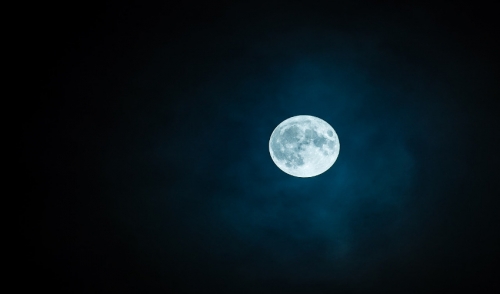
Planting by Moon Phases
Moon gardening is a traditional technique for planning your planting and adjusting planting times for an optimum harvest. Why not give it a try and avoid the stress of fussy planting calendars and instead rely on nature's wisdom and the natural planetary balance to grow your garden?
Dark and Light Phases
While there have been no detailed, scientific studies of whether or not moon phase planting has a great impact on plant growth or harvest yield, many farmers and gardeners swear by the technique and have their own positive experiences to back it up. Simply put, this technique for planting takes advantage of how lunar positions impact the earth's fluids – not just oceanic tides, but also groundwater swells and even the sap within plants. These may seem like minor effects, but they can make a significant difference to your crops.
The general rule of thumb for planting by moon phases is…
- During the light, plant what needs light.
This means during the moon's light phase – the two weeks between the new moon and the full moon, when moonlight is increasing – plant crops that are borne above the ground, where they see the light. This includes corn, pumpkins, cucumbers, eggplants, tomatoes, beans, peppers and other vegetables, as well as sunflowers and similar blooms. During this period, the moon's gravitational influence pulls moisture up higher in the earth, making it easier for plants to take up moisture and nutrients. At the same time, the stronger moonlight encourages better foliage growth to support these types of plants.
- During the dark, plant what thrives in darkness.
During the moon's dark phase – between the full moon and the new moon, when the moon is waning and light levels are decreasing – it is best to plant crops that are borne below the ground and do not require as much light to thrive. This includes root crops such as radishes, potatoes, turnips, carrots, onions and beets, as well as flowering bulbs. During this phase, there is still water available in the soil but as light levels drop off, better root development is encouraged and these crops will thrive better.
More Than the Moon
Of course, a successful, healthy, productive crop requires more than just the right moon phase to thrive. While the phase of the moon can help you decide when to plant your crops, don't forget to consider…
- Soil temperatures, including the risk of freezes or frosts that can harm seeds and seedings
- Soil quality and any necessary fertilizing, treatments or other amendments
- Plant growth rates and the time needed for the crop to reach maturity for harvest
These considerations can help you choose the proper month for your planting, while the moon phase can help you choose just when to get seeds and seedlings in the ground for the best results.
Other Moon Gardening Tasks
In addition to planting your garden, you can use moon phases to help plan the best timing for other gardening tasks that can benefit from lunar influence.
- During the light phase, take the time to repot houseplants, graft fruit trees and plant landscaping trees. All of these tasks can benefit from easier moisture uptake and better sap flow aided by lunar tidal forces.
- During the dark phase, prune shrubs, remove weeds and take steps to control slugs. The weaker tidal influence and lower light will make these tasks somewhat easier if the moon is waning when you tackle them.
There is a lot of folk wisdom behind moon gardening, and while everyone's results will vary, why not try this type of technique and see just how much the moon can influence your garden?

